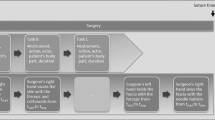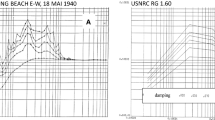Abstract
Many operational research (OR) techniques use historical data to populate model input parameters. Although the majority of these models take into account stochastic variation of the inputs, they do not necessarily take into account seasonal variations and other stochastic effects that might arise. One of the major applications of OR lies within healthcare, where ever increasing pressure on healthcare systems is having major implications on those who plan the provision of such services. Coping with growing demand for healthcare, as well as the volatile nature of the number of arrivals at a healthcare facility makes modelling healthcare provision one of the most challenging fields of OR. This paper proposes the use of a relatively modern time series technique, Singular Spectrum Analysis (SSA), to improve existing algorithms that give required staffing levels. The methodology is demonstrated using data from a large teaching hospital's emergency unit. Using time dependent queueing theory, as well as SSA, staffing levels are obtained. The performance of our technique is analysed using a weighted mean square error measure, introduced in this paper.










Similar content being viewed by others
References
Alexandrov T . SSAwiki: SSA knowledge base. http://www.math.uni-bremen.de/~theodore/ssawiki/, accessed June 2012.
Au L et al (2009). Predicting overflow in an emergency department. IMA Journal of Management Mathematics 20 (1): 39.
BBC (2011a). Patient handovers at hospitals ‘delaying ambulances’. 17 January, http://www.bbc.co.uk/news/uk-wales-politics-12190751, accessed June 2012.
BBC (2011b). Ambulances ‘facing regular delays at AE’. 13 December, http://www.bbc.co.uk/news/health-16052725, accessed June 2012.
BBC (2011c). Welsh A&E waiting times miss target despite improvement. 26 May, http://www.bbc.co.uk/news/uk-wales-13563171, accessed June 2012.
Brenner S, Zeng Z, Liu Y, Wang J, Li J and Howard PK (2010). Modeling and analysis of the emergency department at University of Kentucky Chandler Hospital using simulations. Journal of Emergency Nursing: JEN: Official Publication of the Emergency Department Nurses Association 36 (4): 303–310.
Broomhead DS and King GP (1986a). Extracting qualitative dynamics from experimental data. Physica D 20 (2–3): 217–236.
Broomhead DS and King GP (1986b). On the qualitative analysis of experimental dynamical systems. In: Sarkar S (ed). Nonlinear Phenomena and Chaos (Malvern, 1985). Malvern Phys. Ser. Hilger: Bristol, pp 113–144.
Cardoen B, Demeulemeester E and Belien J (2010). Operating room planning and scheduling: A literature review. European Journal of Operational Research 201 (3): 921–932.
Coats TJ and Michalis S (2001). Mathematical modelling of patient flow through an accident and emergency department. Emergency Medicine Journal 18 (3): 190.
Colebrook JM (1978). Continuous plankton records—Zooplankton and environment, northeast Atlantic and North Sea, 1948–1975. Oceanologica Acta 1 (1): 9–23.
Elsner JB and Tsonis AA (1996). Singular Spectrum Analysis: A New Tool in Time Series Analysis. Plenum: New York.
Fraedrich K (1986). Estimating the dimensions of weather and climate attractors. Journal of the Atmospheric Sciences 43 (5): 419–432.
Gillard JW, Harper PR, Knight VA and Williams JL (2010). Forecasting Welsh ambulance demand. In: Proceedings of the 2nd Student Conference in Operational Research. Nottingham, UK. 19–11 April.
Golyandina N, Nekrutkin V and Braulov K . Caterpillar-SSA. http://www.gistatgroup.com/cat/, accessed June 2012.
Golyandina N, Nekrutkin V and Zhigljavsky A (2001). Analysis of Time Series Structure, Volume 90 of Monographs on Statistics and Applied Probability. Chapman & Hall/CRC: Boca Raton, FL, SSA and related techniques.
Green L, Kolesar P and Svoronos A (1991). Some effects of nonstationarity on multiserver Markovian queueing systems. Operations Research 30 (3): 502–511.
Green L, Kolesar P and Soares J (2001). Improving the SIPP approach for staffing service systems that have cyclic demands. Operations Research 49 (4): 549–564.
Green L, Soares J, Giglio J and Green R (2006). Using queueing theory to increase the effectiveness of emergency department provider staffing. Academic Emergency Medicine 13 (1): 61–68.
Griffiths JD, Price-Lloyd N, Smithies M and Williams J (2006). A queueing model of activities in an intensive care unit. IMA Journal of Management Mathematics 17 (3): 277.
Hassani H (2007). Singular spectrum analysis: Methodology and comparison. Journal of Data Science 5 (2): 239–257.
Hassani H and Thomakos D (2010). A review on singular spectrum analysis for economic and financial time series. Statistics and Its Interface 3 (3): 337–397.
Ingolfsson A, Akhmetshina E, Budge S, Li Y and Wu X (2007). A survey and experimental comparison of service-level-approximation methods for nonstationary M(t)/M/s(t) queueing systems with exhaustive discipline. INFORMS Journal on Computing 19 (2): 201–214.
Jennings OB, Mandelbaum A, Massey WA and Whitt W (1996). Server staffing to meet time-varying demand. Management Science 42 (10): 1383–1394.
Jolliffe IT (2002). Principal Component Analysis. Springer Series in Statistics, 2nd edn. Springer-Verlag: New York.
Knight V Personal Webpage www.vincent-knight.com, accessed June 2012
Korobeynikov A RSSA, http://github.com/asl/rssa, accessed June 2012.
Leonard M, John M, Elsheimer B and Kessler M (2010). An introduction to singular spectrum analysis with SAS/ets software. SAS Global Forum.
Paul SA, Reddy MC and DeFlitch CJ (2010). A systematic review of simulation studies investigating emergency department overcrowding. Simulation 86 (8–9): 559–571.
Smith H, Harper P, Potts C and Thyle A (2009). Planning sustainable community health schemes in rural areas of developing countries. European Journal of Operational Research 193 (3): 768–777.
Vautard R and Ghil M (1989). Singular spectrum analysis in nonlinear dynamics, with applications to paleoclimatic time series. Physica D 35 (3): 395–424.
Vile J, Gillard J, Harper P and Knight V (2012). Predicting ambulance demand using singular spectrum analysis. Journal of Operational Research Society 63 (11): 1556–1565.
Weare BC and Nasstrom JS (1982). Examples of extended empirical orthogonal function analyses. Monthly Weather Review 110 (6): 481–485.
Williams JL, Gillard JW, Harper PR and Knight VA (2010). Forecasting Welsh ambulance demand using singular spectrum analysis. In: Testi A, Tanfani E, Ivaldi E, Carello G, Aringhieri R and Fragnelli V (eds). Operations Research for Patient—Centered Health Care Delivery. Proceedings of the XXXVI International ORAHS Conference. Genoa, Italy, 18–23 July.
Winston WL (1998). Operations Research: Applications and Algorithms. Brooks/Cole: Pacific Grove, CA.
Acknowledgements
The authors thank Professor Paul Harper (Cardiff School of Mathematics) for his constructive advice throughout the preparation and writing of this paper.
Author information
Authors and Affiliations
Corresponding author
Rights and permissions
About this article
Cite this article
Gillard, J., Knight, V. Using Singular Spectrum Analysis to obtain staffing level requirements in emergency units. J Oper Res Soc 65, 735–746 (2014). https://doi.org/10.1057/jors.2013.41
Received:
Accepted:
Published:
Issue Date:
DOI: https://doi.org/10.1057/jors.2013.41




